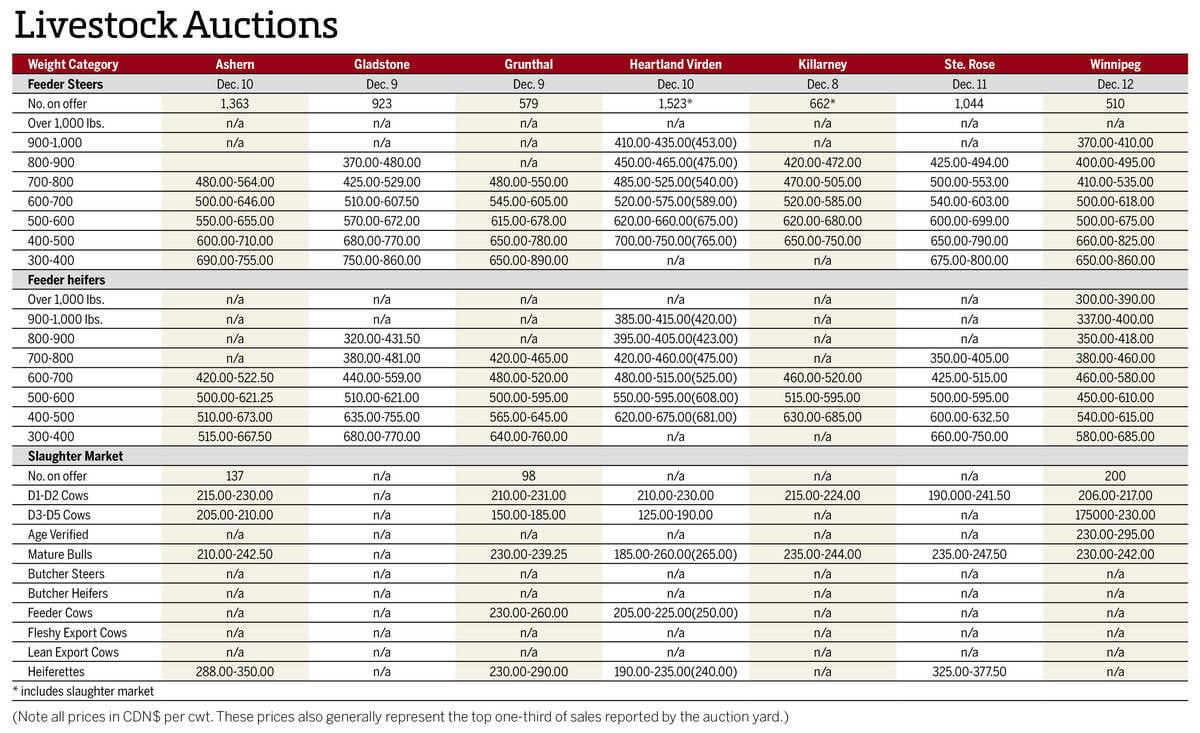ICE canola futures fell to fresh contract lows during the week ended Feb. 22, but did manage to find some support to the downside as values eventually consolidated near the bottom edge of their long-term trading range.
The focus in the futures has shifted from the March contract to the May, with intermonth spreading a feature early in the week as traders rolled out of the front month. May canola hit a yearly low of $479 per tonne on Feb. 20, but managed to finish the week just above $480.
The $475- to $480-per-tonne level marks a long-term support point on the weekly charts going back for two years, and appears to be holding for the time being. While a profit-taking correction is possible from a technical standpoint, canola continues to face strong fundamental headwinds that may limit any potential recovery.
Read Also

Manitoba cattle prices Dec. 16
Here’s what local farmers were getting paid last week for their cattle at Manitoba livestock auction marts; prices covering the week Dec. 8-12, 2025.
While the domestic crush is running at a steady pace, canola exports are lagging the year-ago level and traders are concerned that tensions with China may cut further into demand.
Agriculture and Agri-Food Canada released updated supply/demand tables during the week, forecasting ample canola ending stocks for the foreseeable future. The agency’s market analysis division raised its forecast for 2018-19 canola ending stocks by 200,000 tonnes, to 2.5 million.
Early expectations for the 2019-20 carry-out are also at 2.5 million, which means end-users have little reason to be concerned about tightening supplies for the time being.
The U.S. is also sitting on large soybean stocks, while new-crop South American supplies are starting to find their way to the export market.
Soybean futures at the Chicago Board of Trade did manage to move higher during the week on the back of improving trade sentiment. While there is still no set deal, negotiations between the U.S. and China were generally deemed successful. China reportedly agreed to buy large quantities of U.S. soybeans, while the U.S has promised to hold off on increasing tariffs on Chinese imports.
Wheat futures saw some large price swings during the week, dropping to contract lows in some cases before bouncing higher. Wheat was down again Monday morning, Feb. 25, as the U.S. continues to run into stiff competition from Russia on the global export front.
The International Grains Council released updated supply/demand projections during the week, pegging the world wheat crop in 2018-19 at 735 million tonnes. That was down by two million from an earlier forecast and compares with the 764 million tonnes grown in 2017-18.
World wheat carry-out for 2018-19 is estimated at 262 million tonnes by the IGC, which compares with 271 million tonnes the previous year.
















